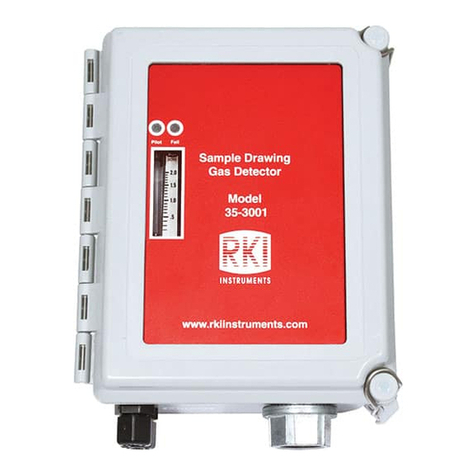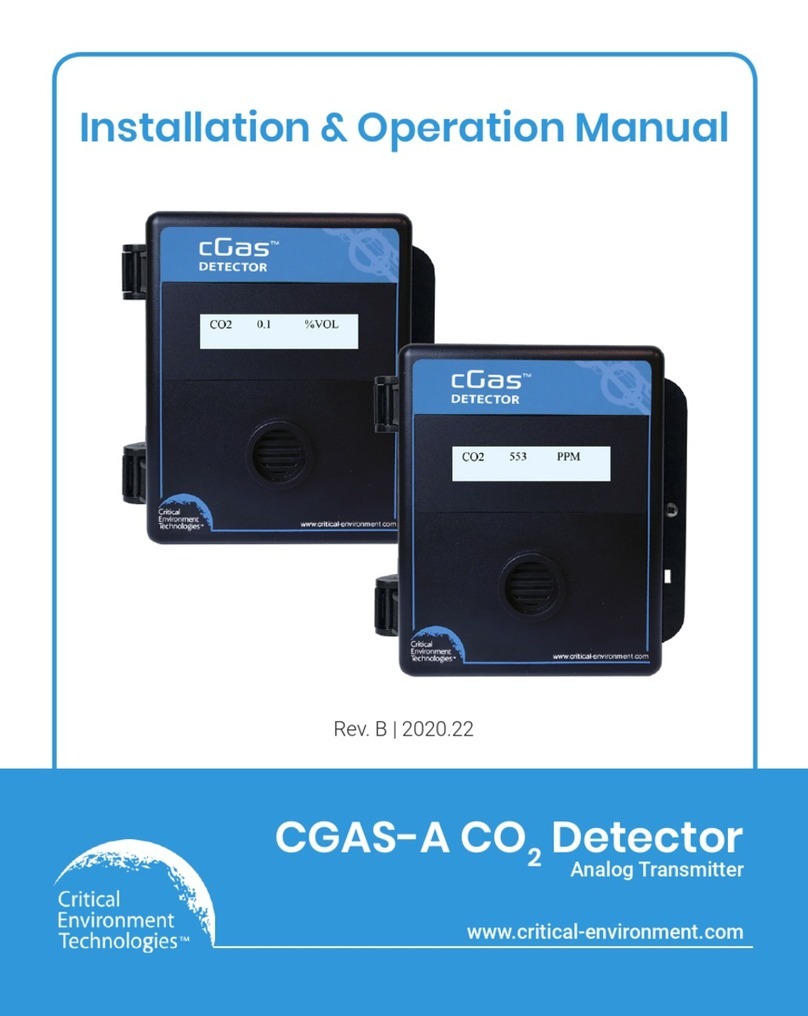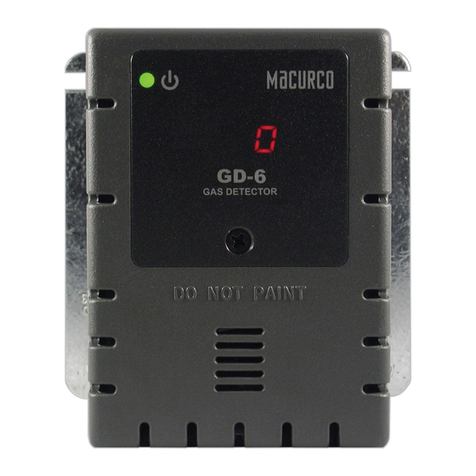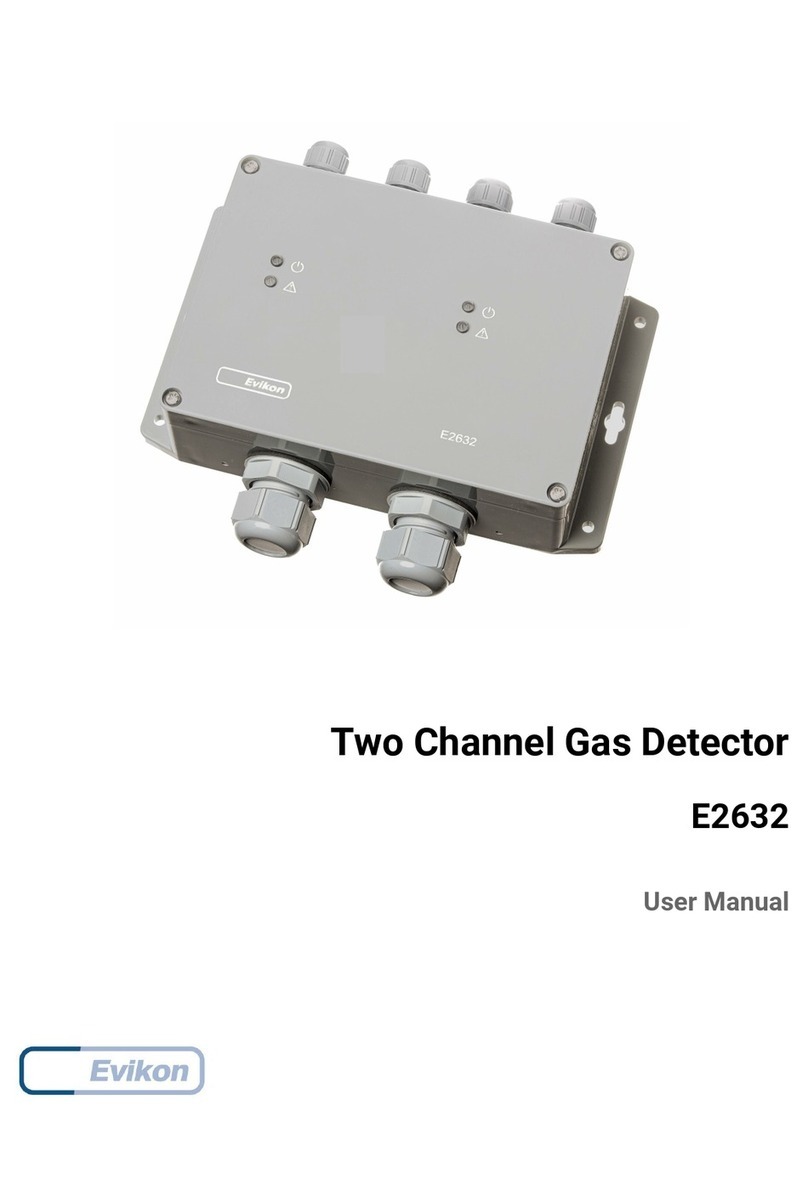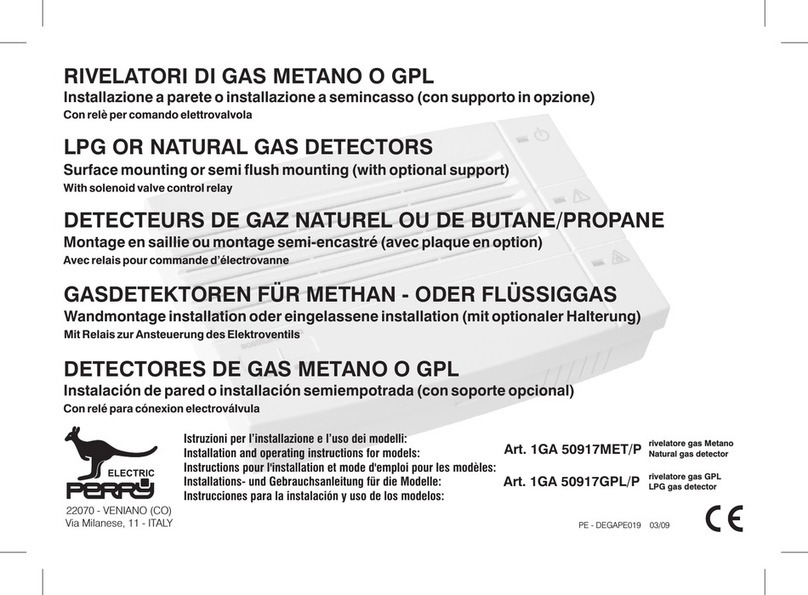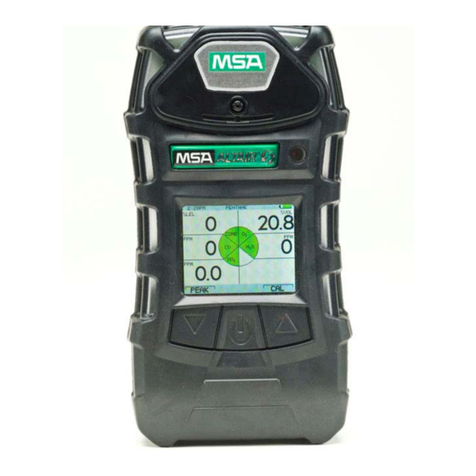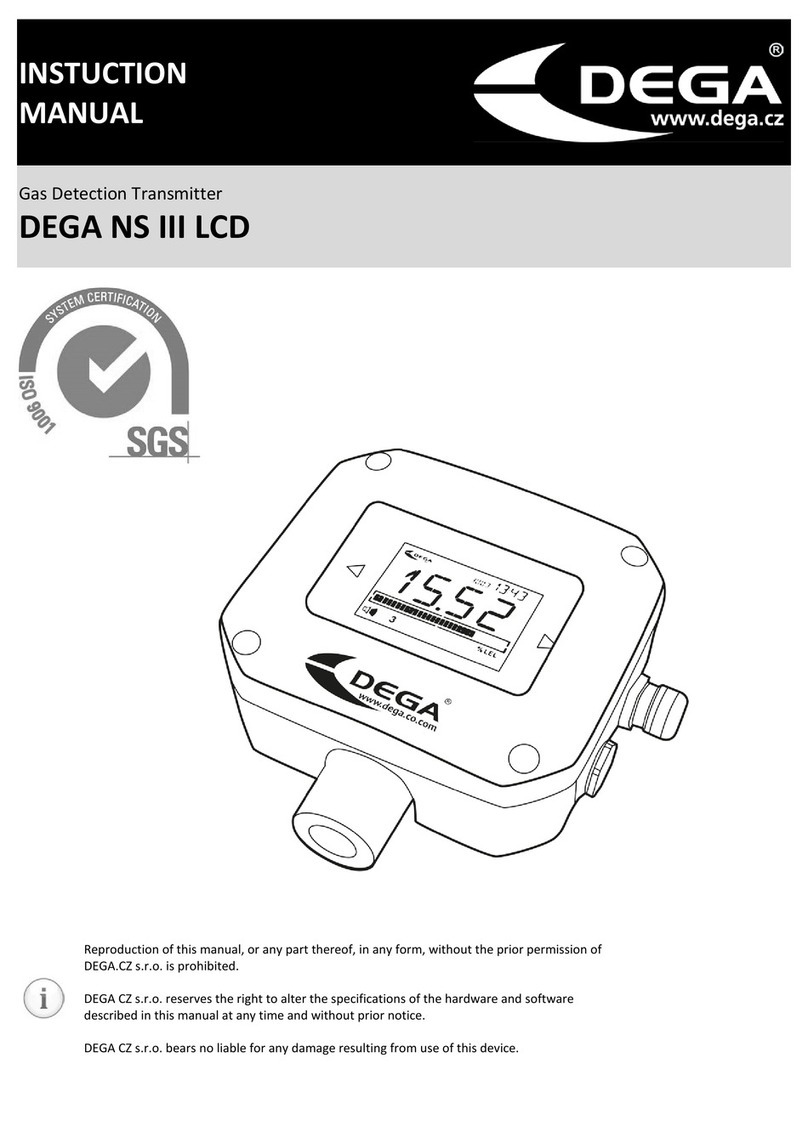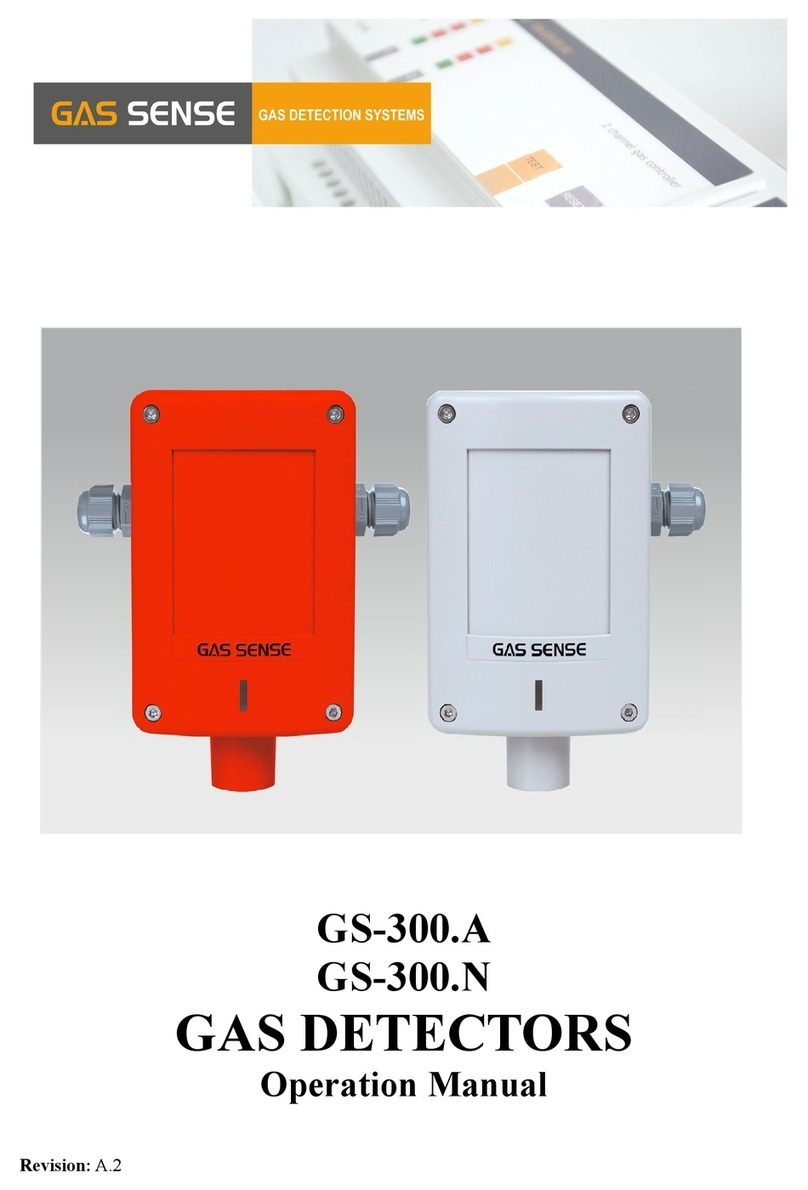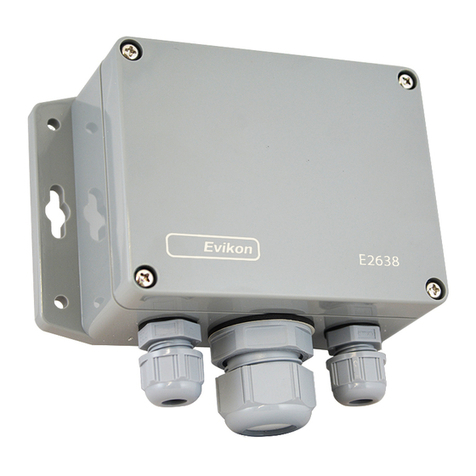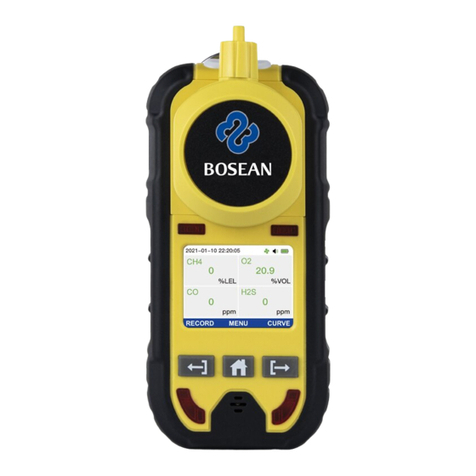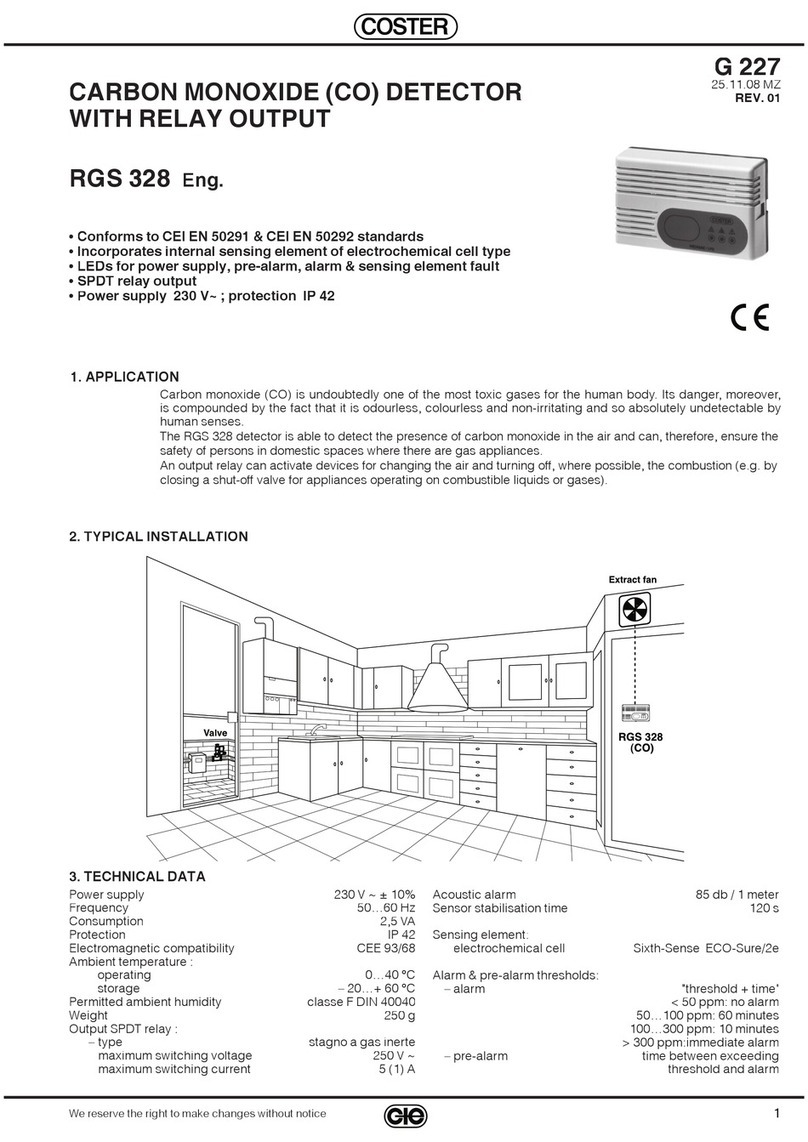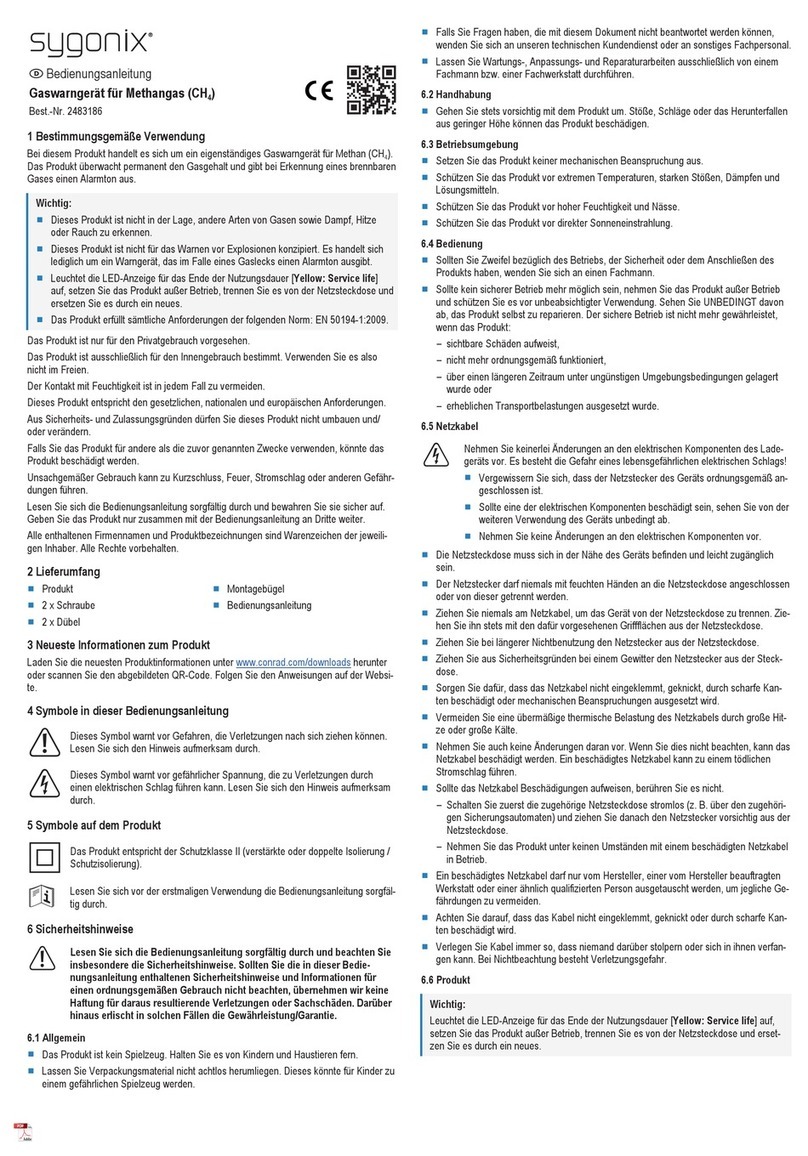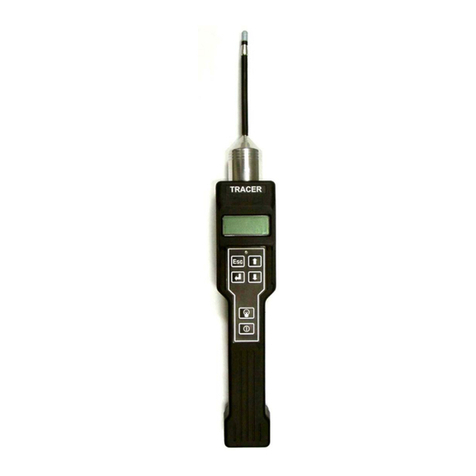
Combustible Gas Leak Detector/English Combustible Gas Leak Detector/English
10 11
13/08/2017 Version No. 001 13/08/2017 Version No. 001
1-Check for an appropriate work area as indicated in the General Safety Section.
2-Determine the application and confirm that you have the correct equipment. See the
specifications section for information on sensitivity, gases detected and other information.
3-Make sure that all equipment has been properly inspected.
4-In an area where combustible gases are known to not be present, turn on the gas
detector by pressing and releasing the ON/OFF button for one second. The gas detector
will vibrate and beep. The gas detector then starts an approximately 40 second sensor
heat up and calibration. It will display a countdown. Once the countdown is over, it
will beep and vibrate. It will then display the current gas concentration values, gas
explosion limitation and the max gas concentration values. If battery shape is void,
this indicates that the batteries need to be charged. If the LCD is flashing and beeping,
this indicates that the sensor
has failed and that the unit needs to be serviced. If the
gas detector is left ON for more than ten minutes with no activity and Auto Power
Off is enable, it will automatically shut OFF to conserve the batteries.
5-The buzzer will sound after warming up for 40 seconds, then you can start to test.
6-Press and release the Vibration Alert button to turn it ON and OFF. The gas detector
will vibrate twice when turning the Vibration Alert ON and vibrate once when turning
the Vibration Alert OFF. Press and release the BackLight button to turn it ON and OFF.
7-Enter the area to be monitored. Pay close attention to the gas level indicators (see
Table 1). As gas levels increase, LCD display values will rise and the frequency of the
Audible Alert beeping and the Vibration Alert vibration will increase. See Table 1 for
information on methane concentration levels and gas detector feedback.
8-In the low sensitivity setting, the lowest concentration of methane detected is 10ppm.
Switch the sensitivity to the high setting by pressing the high sensitivity button(H). The
lowest concentration of methane detected is 100ppm. Sensitivity can be changed at
any time by pressing the High Sensitivity(H)or Low Sensitivity (L)buttons. If locating a
leak, use the gas detector to find areas of lower gas concentration and follow back to
the source. In a piping system, trace the system, stopping at the joints to monitor the
gas levels.
9-When gas detection is complete, turn the MICRO Combusitble Gas Leak Detector
OFF by pressing the ON/OFF button.
Table 1-Gas Detector Feedback For Methane Concentration Levels
7-1.BackLight
Sensitivity Audible Alert Beeping frequency
=0ppm
0...100ppm, 1...1000ppm
100...400ppm, 1000...4000ppm
400...700ppm, 4000...7000ppm
700...1000ppm, 7000...10000ppm
≥ppm, ≥ppm1000 10000
OFF
1cyc/sec
1.2cyc/sec
1.65cyc/sec
3.25cyc/sec
6.25cyc/sec
Gas Concentration levels may differ depending on the specific gas detected.
Press and release the BackLight button enable or disable. When BackLight is enable,
BackLight is open, otherwise it is closed.
7-2.Auto Zero
Press and release the Auto Zero button to enable or disable. Enable Auto Zero can quickly
adjust the zero point of sensor, improve the sensitivity and reduce the interference of
unknown gases.
7-3.Auto Power Off
8-1.Cleaning
8-Maintenance
Press and release the Auto Power Off button to enable or disable. If the gas detector
is left ON for more than ten minutes with no activity and Auto Power Off is enabled,
it will automatically shut OFF to conserve the batteries.
Do not immerse the MICRO Combusitble Gas Leak Detector in water. Wipe off dirt with a
damp soft cloth. Do not use aggressive cleaning agents or solutions. Treat the instrument
as you would a telescope or camera.
8-2.Sensor Calibration/Replacement
The MICRO Combusitble Gas Leak Detector requires no calibration other than that done
at regular start up. If the sensor should fail, the sensor can be replaced.
